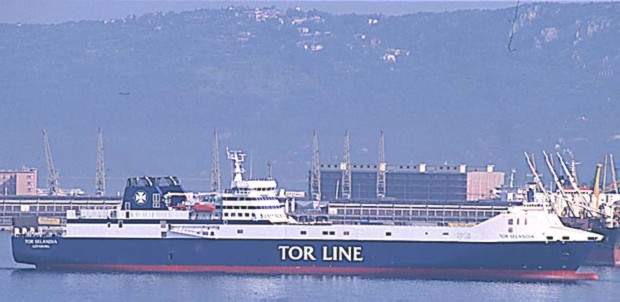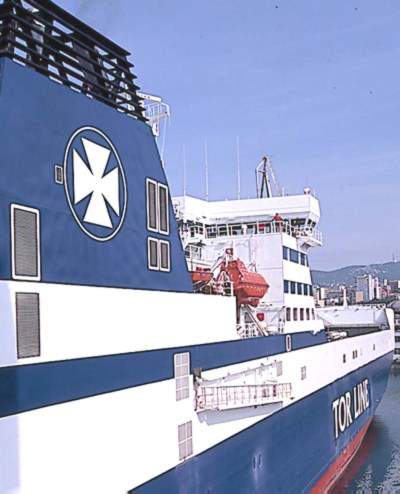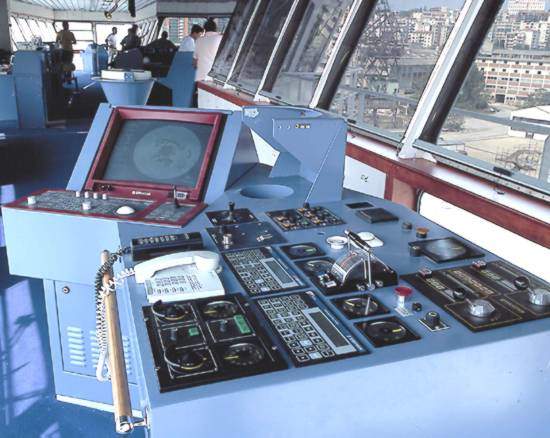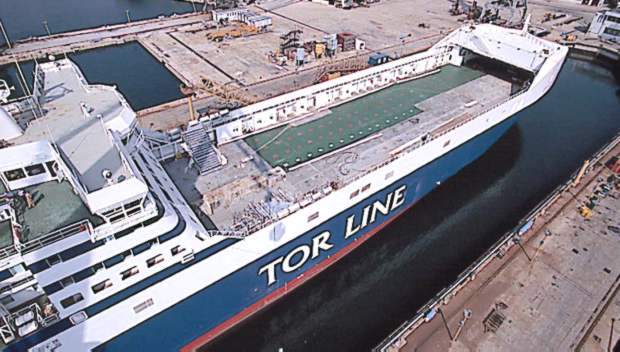North Sea ferry and freight operator Tor Lines (now DFDS Tor Line) found that its new vessel, the Tor Selandia, the first newbuilt for the firm in more than two decades, had cut 14 hours off its AngloBridge operation.
The result proved that the busy link between the Swedish and United Kingdom ports of Gothenburg and Immingham could be covered within 24 hours, as opposed to the previous 34-hour crossing.
The possibility of scheduling sailings later in the day means that trailers can be more efficiently used inland and the potential catchment area for manufacturers, shippers and retailers has been increased.
Tor Selandia represents the leading edge of a three-ship investment programme for DFDS Tor Line, in which the accent had been on design engineering to promote high productivity and year-round service reliability in a tough trading environment.
The 11,089dwt freight ro-ro vessel was built at Fincantieri’s Ancona yard in Italy and delivered to the DFDS Tor Line at the end of 1998. She was constructed to Det Norske Veritas classification standards and flies the Swedish flag.
Design
Design of the Tor Selandia had to encompass an ability to move through the lock gates at the Humberside port of Immingham so her breadth of nearly 26m was critical. Notwithstanding an overall length of 197.5m, she displays a relatively slim and efficient hull form with a low block coefficient of 0.56.
DFDS Tor Line used this vessel to introduce an innovative semi-automatic method of lashing trailers. Central to the arrangement is a trestle-based structure, which enables a range of trailer types and sizes to be made fast to the deck with the minimum human intervention.
The Autotrestle securing unit incorporates a recessed and built-in fifth wheel, which couples directly to the trailer’s kingpin. The terminal tractor connects with the trestle and trailer combination on land, and drives the whole unit aboard the vessel where the trestle bridge is positioned over the point of stow. Twistlocks at the base of the trestle legs, controlled from the dock tractor, are automatically clamped to flush sockets in the deck. The connection and heavily-reinforced socket were designed to absorb the vertical, longitudinal and transverse forces experienced in bad weather.
Kvaerner Ships Equipment, now part of a UK supplier, Hamworthy, designed the cargo access arrangements with the speed of the turnaround in mind. There is a stern-opening equivalent to almost the full beam of the vessel, and an entirely obstruction-free main deck. The distance between the two interdeck ramps is large due to the asymmetric position of the fixed ramp.
The stern ramp offers an unusually large driveway width of 20.8m for carrying oversize loads, for example, annual traffic of around 600,000t-700,000t is generated by Avesta, which ships steel slabs from the UK to Sweden and then ships hot rolled coils back again, and some 500,000-600,000t of newsprint is carried each year for Stora.
Propulsion
Tor Selandia includes a new design of the Swiss-developed medium-speed ZA50S diesel from Wärtsilä’s Sulzer stable. Two engines provide a total power concentration of 21,600kW (29,366bhp) and a service speed of 21k.
Drive is connected to two highly skewed controllable pitch propellers through Renke Tacke reduction gears in an installation enabling the vessel to achieve top trial speeds of 23k.
A power take-off is provided on each reduction gear for a 1,400kW STN Atlas shaft generator so that the seagoing electrical load is covered by employing energy from the main drive system.






